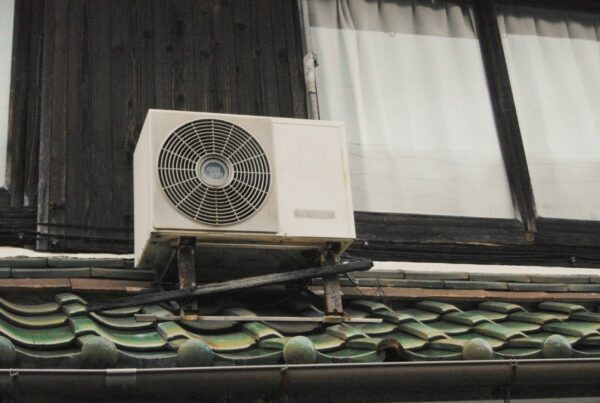Last Updated on January 17, 2024
Water is an indispensable part of our daily lives, playing a crucial role in various household activities. From cooking and cleaning to personal hygiene, water is a vital resource. However, with this necessity comes the responsibility of ensuring water safety within our homes. In this comprehensive guide, we will delve into the crucial aspects of water safety in the home, focusing specifically on water treatment and Legionella management.
Understanding Water Safety at Home
Water safety involves protecting individuals and property from potential hazards associated with water use. In a home setting, this encompasses not only preventing accidents like drowning but also addressing health risks related to waterborne contaminants and the growth of harmful bacteria, such as Legionella.
Water Treatment for Household Safety
Maintaining the quality of water in your home is paramount for the health and well-being of your family. Water treatment involves the removal of impurities, contaminants, and potentially harmful substances to ensure that the water you use is safe for various purposes. For more information, please check this site: https://en.wikipedia.org/wiki/Water_treatment.
Investing in a reliable water treatment system is a proactive step towards achieving this goal. Water treatment options range from simple filtration systems to more advanced purification technologies. Ensuring the purity of your water contributes significantly to overall home safety by reducing the risk of waterborne illnesses.
Legionella Management in Domestic Settings
Legionella bacteria pose a particular risk in water systems, leading to Legionnaires’ disease, a severe form of pneumonia. While often associated with large buildings, Legionella can also thrive in domestic settings, making Legionella management crucial for home safety.
Temperature Control: Legionella bacteria thrive in temperatures between 20 to 45 degrees Celsius. To prevent their growth, regularly check and adjust the water heater temperature to remain below 20 degrees Celsius or above 60 degrees Celsius.
Regular Cleaning and Flushing: Stagnant water in pipes and tanks can contribute to Legionella growth. Ensure that taps, showerheads, and other water outlets are regularly cleaned. Additionally, flush unused water outlets to prevent water from standing still for extended periods.
Periodic System Checks: Consider periodic checks by professionals to assess the risk of Legionella in your home’s water system. This is especially important if you have features like hot tubs or spas, which can provide an ideal breeding ground for the bacteria.
Routine Plumbing Maintenance
Regular maintenance of your plumbing system is crucial for overall water safety in the home. Leaks, corrosion, and other plumbing issues not only lead to property damage but can also create conditions conducive to Legionella growth. Periodically inspect your plumbing system, addressing any leaks or issues promptly.
Education and Awareness
Fostering awareness about water safety and Legionella management is essential for all members of the household. Educate your family about the risks associated with contaminated water and the importance of adhering to safety measures. Promote responsible water usage, especially in homes with vulnerable individuals such as the elderly or those with compromised immune systems.
Professional Water Testing
Regular water testing is a proactive approach to identifying potential issues before they escalate. Professional water testing services can detect the presence of contaminants, including Legionella bacteria, providing valuable insights into the safety of your home’s water.
The Importance of Consistent Efforts
Ensuring water safety within the home is an ongoing process that demands consistent effort from every household member. Regularly revisiting and reinforcing safety measures is crucial. Conduct family meetings to discuss the importance of water safety, encouraging open communication about any concerns related to water quality or potential risks. This collaborative approach fosters shared responsibility among family members, enhancing overall awareness and compliance with safety measures.
Consider organizing community-wide initiatives on water safety. Collaborate with neighbors to host workshops or informational sessions focusing on Legionella management and water treatment. Establishing a sense of shared responsibility within the community not only enhances overall safety but also creates a support network for addressing water-related challenges collectively.
Expanding on the Professional Water Testing Aspect
Professional water testing services, like those offered by totalwater.co.uk, provide a detailed analysis of your home’s water quality. In addition to detecting contaminants, these services can provide tailored recommendations for improving water safety. Regular testing, ideally performed at least once a year, serves as an early warning system, allowing you to address potential issues before they escalate.
Moreover, consider exploring new technologies in water testing. Advances such as smart sensors and real-time monitoring systems provide continuous insights into water quality, offering a proactive approach to identifying and addressing potential concerns promptly.
Conclusion
Ensuring water safety within the home is a dynamic process that necessitates both individual and collective efforts. By consistently implementing water treatment measures, managing Legionella risks, and staying proactive through routine maintenance, professional water testing, and community involvement, you not only create a secure environment for your family but also contribute to a broader culture of water safety within your community.
Remember, prioritizing water safety is not a one-time task but an ongoing commitment. Through continuous education, collaboration, and vigilance, you play a vital role in maintaining a safe and healthy living environment for your loved ones and your community.





